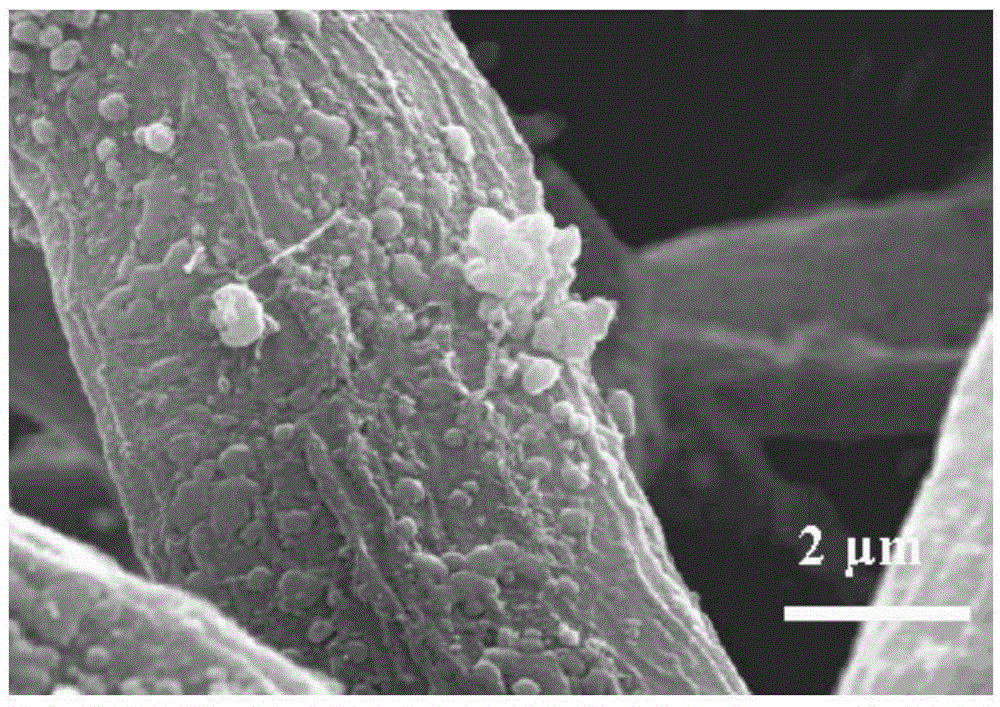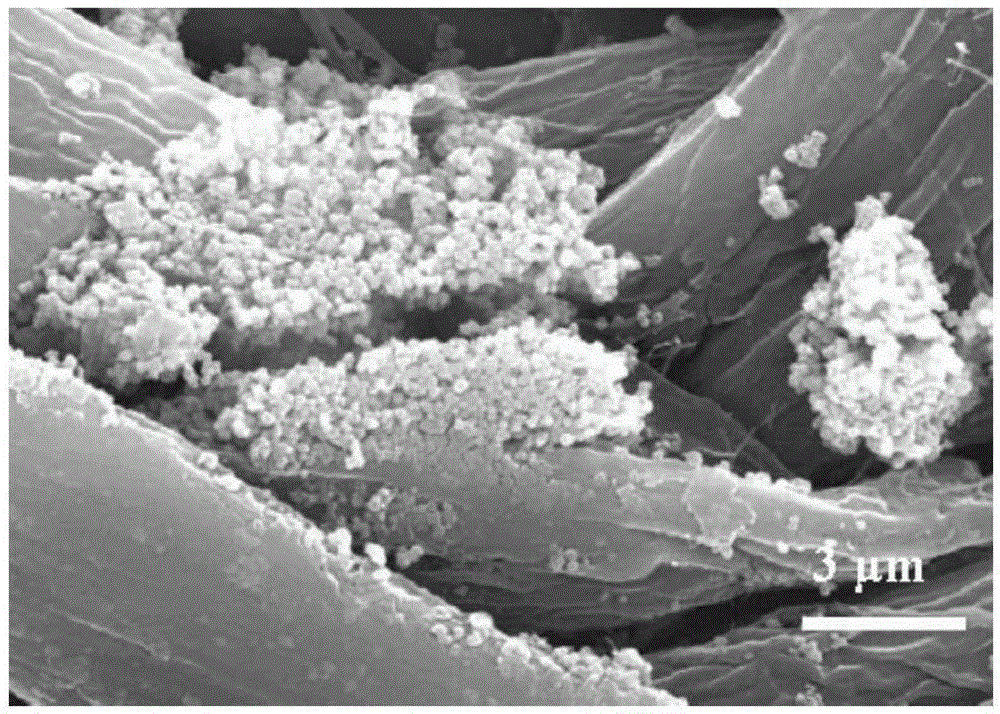Preparation method and application of attachment SnS2 nonwoven fabric
A technology of non-woven fabric and impregnation method, applied in the field of materials science, which can solve the problems of poor photolysis reaction, failure to generate, and particle agglomeration of non-woven fabrics, and achieve the effects of enhanced self-cleaning effect, low toxicity, and good stability
- Summary
- Abstract
- Description
- Claims
- Application Information
AI Technical Summary
Problems solved by technology
Method used
Image
Examples
Embodiment 1
[0033] Step 1: Add 0.01molSnCl 4 and 0.02molNa 2 S was dispersed in 20 mL of [3-MBP][BF with a purity of 0.99 4 ] In the ionic liquid, in order to ensure uniform dispersion, the mixture needs to be ultrasonically treated for 5-10 minutes;
[0034] Step 2: Add 3×3cm uniform non-woven fabric to the above mixture, ultrasonic treatment for 60 minutes, ultrasonic power is 300W;
[0035] Step 3: The above-mentioned non-woven fabric is washed 4-6 times with deionized water and absolute ethanol, and dried at 60° C. for 2-4 hours to obtain the final product.
[0036] Attached SnS prepared as above 2 Non-woven SEM such as figure 1 As shown, it can be seen from the figure that the SnS on the non-woven fabric 2 The particles are very small and the shape is very clear, well separated and evenly attached to the fiber, SnS 2 The particle size of the particles is 30nm-50nm.
[0037] In order to test the attached SnS prepared in this example 2 For the self-cleaning effect of non-woven fa...
Embodiment 2
[0040] The difference between this example and Example 1 is that the ionic liquid is 1-ethyl-3-methylimidazolium hexafluorophosphate ionic liquid with a purity of 0.99.
[0041] Attached SnS prepared as above 2 Non-woven SEM such as figure 2 As shown, it can be seen from the figure that the SnS on the non-woven fabric 2 The distribution of particles is uneven, and most of them are concentrated in a certain position on the non-woven fabric, appearing in a pile, and the particle agglomeration phenomenon is serious.
[0042] In order to test the attached SnS prepared in this example 2 For the self-cleaning effect of non-woven fabrics after dipping in red wine, SnS will be attached 2 The non-woven fabric is tested according to the photocatalytic degradation test method.
[0043] The result is: after 30 minutes of ultraviolet irradiation, the colorimetric result is grade 6, and the self-cleaning effect is not good.
Embodiment 3
[0045] The difference between this embodiment and the first embodiment is that the solvent of this embodiment is deionized water.
[0046] In order to test the attached SnS prepared by the method of the present invention 2 The self-cleaning effect of non-woven fabrics on red wine after dipping, will be attached to SnS 2 The non-woven fabric is tested according to the photocatalytic degradation test method.
[0047] The result is: after 30 minutes of ultraviolet irradiation, the colorimetric result is grade 7.
PUM
| Property | Measurement | Unit |
|---|---|---|
| particle diameter | aaaaa | aaaaa |
Abstract
Description
Claims
Application Information
 Login to View More
Login to View More - R&D
- Intellectual Property
- Life Sciences
- Materials
- Tech Scout
- Unparalleled Data Quality
- Higher Quality Content
- 60% Fewer Hallucinations
Browse by: Latest US Patents, China's latest patents, Technical Efficacy Thesaurus, Application Domain, Technology Topic, Popular Technical Reports.
© 2025 PatSnap. All rights reserved.Legal|Privacy policy|Modern Slavery Act Transparency Statement|Sitemap|About US| Contact US: help@patsnap.com


